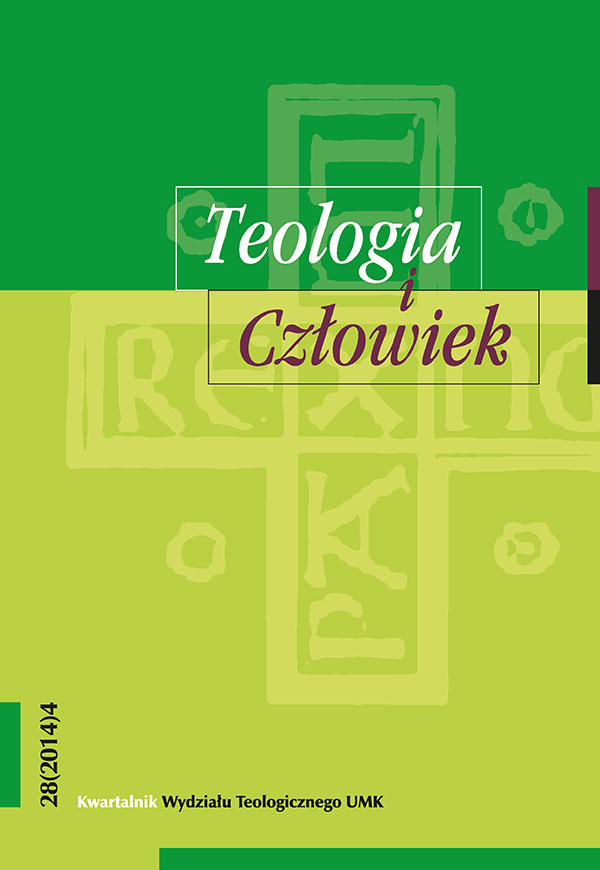Common priesthood in the celebration of the Eucharist
DOI:
https://doi.org/10.12775/TiCz.2014.059Keywords
priesthood, Eucharist, liturgyAbstract
The secular believers through baptism are incorporated into Christ’s priesthood. We are talking about the common priesthood of all the baptized. As “a chosen people, a royal priesthood, a holy nation, a people belonging to God” (1 Peter 2: 9) they are destined for divine worship, for conscious and active participation in the liturgy of the Church, for sharing the sacrifice of the Eucharist, for the sacramental life, for prayer, for thanksgiving, for testimony of life and active love. Reborn in Baptism, anointed with the Holy Spirit, as a spiritual house and a holy priesthood they are called to offer spiritual sacrifices by all Christian works. By participating in the dignity of the priesthood, which enables them to make a real sacrifice, that is Jesus Christ and to connect with it the sacrifice of their own lives, through those they become agents of grace and give true worship to God. Specific Eucharistic assembly reveals the Church as the Mystical Body of Christ, where It is the head of the body, the congregation are individual members. In the liturgy of the Eucharist, Christ fulfils his head function by gathering the believers through the hierarchy and sanctifies them. He makes them a holy person, that is the Church, and together with it he gives glory to his Father. He makes it also in the common prayer of praise to God the Father (cf. SC 83). The whole congregation in communion with Christ is the subject of the liturgy of the Eucharist. Liturgy is therefore the work of Christ and the Church, and He is the principal operant as the sole mediator between God and men. In the liturgy of the Eucharist as the common activity of the whole priestly Body of Christ, the common priesthood of the people of God is realized. The believers in virtue of their common priesthood join in the sacrifice of the Eucharist (cf. SC 10). The Eucharistic assembly embodies the common priesthood and by active participation in the liturgy of the Eucharist it performs specific assembly functions, as well as the functions performed by some members of the congregation. Lively awareness of the people of God, gathered for the celebration of the Eucharist, their participation in the priesthood of Christ, protects liturgy from clericalisation, where the celebrant does everything from the beginning to the end. Active participation in the Eucharist, growing out of the common priesthood, makes a living community of the Eucharistic assembly.
Downloads
Published
How to Cite
Issue
Section
License
CC BY ND 4.0. The Creator/Contributor is the Licensor, who grants the Licensee a non-exclusive license to use the Work on the fields indicated in the License Agreement.
- The Licensor grants the Licensee a non-exclusive license to use the Work/related rights item specified in § 1 within the following fields: a) recording of Work/related rights item; b) reproduction (multiplication) of Work/related rights item in print and digital technology (e-book, audiobook); c) placing the copies of the multiplied Work/related rights item on the market; d) entering the Work/related rights item to computer memory; e) distribution of the work in electronic version in the open access form on the basis of Creative Commons license (CC BY-ND 3.0) via the digital platform of the Nicolaus Copernicus University Press and file repository of the Nicolaus Copernicus University.
- Usage of the recorded Work by the Licensee within the above fields is not restricted by time, numbers or territory.
- The Licensor grants the license for the Work/related rights item to the Licensee free of charge and for an unspecified period of time.
FULL TEXT License Agreement
Stats
Number of views and downloads: 567
Number of citations: 0



